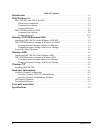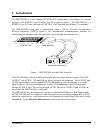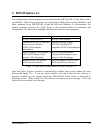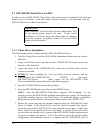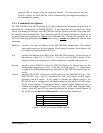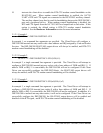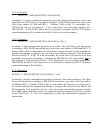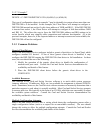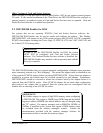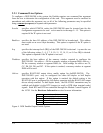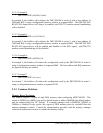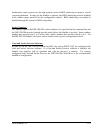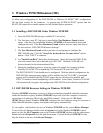
2.1.2.7 Example 7
DEVICE = C:\DSP-200\DSP230CL.SYS (s0,b300,i5) (s1,b340,i10)
The type of configuration shown in example 7 may be desirable in systems where more than one
DSP-200/300 is to be installed. In this example, the Client Driver will attempt to configure a
DSP-200/300 inserted into socket 0 with a base address of 300H and IRQ 5. If the DSP-200/300
is inserted into socket 1, the Client Driver will attempt to configure it with base address 340H
and IRQ 10. This allows the user to force the DSP-200/300's address and IRQ settings to be
socket specific which may simplify cable connections and software development. As in the
previous examples, however, if the requested address or interrupt resources are not available, the
DSP-200/300 will not be configured.
2.1.3 Common Problems
Generic Client Drivers:
Many Card and Socket Services packages include a generic client driver (or SuperClient) which
configures standard I/O devices. If one of these generic client drivers is installed, it may
configure the DSP-200/300 causing the DSP-200/300 client driver to fail installation. In these
cases, the user should do one of the following:
1. Modify the operation of the generic client driver to disable the configuration of
modem/serial port cards. Consult the Card and Socket Services documentation for
availability and details of this feature.
2. Place the DSP-200/300 client driver before the generic client driver in the
CONFIG.SYS.
Available Resources:
One function of the Card and Socket Services software is to track which system resources
(memory addresses, I/O addresses, IRQs, etc.) are available for assignment to inserted PCMCIA
cards. Sometimes, however, the Card Services software assumes or incorrectly determines that a
particular resource is used when it is actually available. Most Card and Socket Services generate
a resource table in a file (typically in the form of an .INI file) which the user can modify to adjust
the available system resources. Consult the Card and Socket Services documentation for
availability and details of this feature.
Multiple Configuration Attempts:
Some Card and Socket Services have a setting which aborts the configuration process after a
single configuration failure (such as a request for an unavailable resource). The user should
change this setting to allow for multiple configuration attempts. Consult the Card and Socket
Services documentation for availability and details of this feature.
2-7 DSP-200/300 (Rev. I and later) User's Manual



